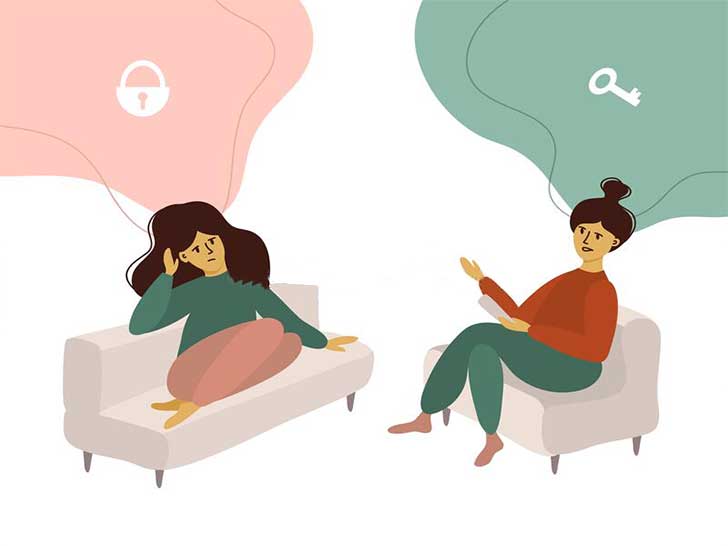اخبار روانشناسی ندای مهر
|
|
||
|
Measure of Body Apperception MBA
The Measure of Body Apperception (MBA) is a measure of the investment in‚ or dependence on‚ one's body image as a source of the sense of self-worth. It has two scales‚ which reflect reliance on physical appearance‚ and reliance on a sense of body intactness or integrity.
Carver‚ C. S.‚ Pozo-Kaderman‚ C.‚ Price‚ A. A.‚ Noriega‚ V.‚ Harris‚ S. D.‚ Derhagopian‚ R. P.‚ Robinson‚ D. S.‚ & Moffatt‚ F. L.‚ Jr. (1998). Concern about aspects of body image and adjustment to early stage breast cancer. Psychosomatic Medicine‚ 60‚ 168-174. [abstract]
Petronis‚ V. M.‚ Carver‚ C. S.‚ Antoni‚ M. H.‚ & Weiss‚ S. (2003). Investment in body image and psychosocial well-being among women treated for early stage breast cancer: Partial replication and extension. Psychology and Health‚ 18‚ 1-13. [abstract]
Here is how we administer the MBA here‚ followed by scoring instructions: ------------------------------------------------------------------------
MBA
Please indicate how much you agree or disagree with the following statements by picking the answer that is closest to the way you feel about each statement. Please be as honest and accurate as you can in responding to the items. Try not to let your response to one statement influence your responses to other statements. These are opinion items‚ so there are no "right" or "wrong" answers. Answer according to your own feelings‚ rather than how you think "most people" would answer. Choose your answers from the following 4 options:
4 = I agree a lot
3 = I agree a little 2 = I DISagree a little 1 = I DISagree a lot 1. It's important to me to look my best all the time.
2. When something goes wrong inside your body‚ you are never really the same person again. 3. If a woman doesn't look good to others‚ she can't possibly feel good about herself. 4. The idea of having surgery bothers me because it means doing damage to my body. 5. I am very careful about my diet. 6. I feel good about myself only if I know I look good to other people. 7. A scar from an operation‚ even one that doesn't show‚ is a constant reminder to yourself that something was wrong with you. 8. I have to look as good as I can to others in order to feel right about myself. 9. Completely apart from the pain‚ I'd have trouble giving myself an injection because it would mean forcing a needle into an undamaged part of my body. 10. I consciously make an effort to avoid eating things I know aren't good for me. ------------------------------------------------------------------------
Items 1‚ 3‚ 6‚ and 8 constitute the subtotal for investment in appearance
Items 2‚ 4‚ 7‚ and 9 constitute the subtotal for investment in body integrity Items 5 and 10 are fillers‚ not scored. |
B = I agree a little
C = I neither agree nor disagree
D = I DISagree a little
E = I DISagree a lot
[2. It's easy for me to relax.]
3. If something can go wrong for me‚ it will.
4. I'm always optimistic about my future.
[5. I enjoy my friends a lot.]
[6. It's important for me to keep busy.]
7. I hardly ever expect things to go my way.
[8. I don't get upset too easily.]
9. I rarely count on good things happening to me.
10. Overall‚ I expect more good things to happen to me than bad.
|
|
||
|
Measure of Attachment Qualities MAQ
The Measure of Attachment Qualities (MAQ) is a measure of adult attachment patterns. It has separate scales to assess secure attachment tendencies and avoidant tendencies‚ and two scales reflecting aspects of the anxious-ambivalent pattern.
Carver‚ C. S. (1997). Adult attachment and personality: Converging evidence and a new measure. Personality and Social Psychology Bulletin‚ 23‚ 865-883. [abstract]
Here is how we administer the MAQ here‚ followed by scoring instructions:
------------------------------------------------------------------------
MAQ
Respond to each of the following statements by expressing how much you agree with it (if you do generally agree) or how much you disagree with it (if you generally disagree). Make all your responses on the answer sheet only. Do not leave any items blank. Please be as accurate as you can be throughout‚ and try especially hard not to let your answer to any one item influence your answer to any other item. Treat each one as though it is completely unrelated to the others. There are no right or wrong answers‚ you are simply to express your own personal feelings and opinions. Choose from these response options:
1 = I DISagree with the statement a lot
2 = I DISagree with the statement a little 3 = I agree with the statement a little 4 = I agree with the statement a lot 1. When I'm close to someone‚ it gives me a sense of comfort about life in general.
2. I often worry that my partner doesn't really love me. 3. I have trouble getting others to be as close as I want them to be. 4. I find it easy to be close to others. 5. I often worry my partner will not want to stay with me. 6. Others want me to be more intimate than I feel comfortable being. 7. It feels relaxing and good to be close to someone. 8. I am very comfortable being close to others. 9. I don’t worry about others abandoning me. 10. My desire to merge sometimes scares people away. 11. I prefer not to be too close to others. 12. I find others are reluctant to get as close as I would like. 13. I get uncomfortable when someone wants to be very close. 14. Being close to someone gives me a source of strength for other activities. ------------------------------------------------------------------------
Items 4‚ 8‚ and 9 are reverse coded.
Security = Items 1‚ 7‚ and 14.
Avoidance = Items 4‚ 6‚ 8‚ 11‚ and 13. Ambivalence-worry = Items 2‚ 5‚ and 9. Ambivalence-merger = Items 3‚ 10‚ and 12. A slightly abbreviated version of the MAQ has been used in research on cancer caregivers‚ published in the following article:
Kim‚ Y.‚ Carver‚ C. S.‚ Deci‚ E. L.‚ & Kasser‚ T. (2008). Adult attachment and psychological well-being in cancer caregivers: The mediational role of spouses' motives for caregiving. Health Psychology‚ 27‚ S144-S154 (special issue on moderation and mediation). [abstract] Kim‚ Y.‚ & Carver‚ C. S. (2007). Frequency and difficulty in caregiving among spouses of individuals with cancer: Effects of adult attachment and gender. Psycho-Oncology‚ 16‚ 714-723. [abstract]
|
|
|
||
|
COPE (complete version)
The COPE Inventory was developed to assess a broad range of coping responses‚ several of which had an explicit basis in theory. The inventory includes some responses that are expected to be dysfunctional‚ as well as some that are expected to be functional. It also includes at least 2 pairs of polar-opposite tendencies. These were included because each scale is unipolar (the absence of this response does not imply the presence of its opposite)‚ and because we think people engage in a wide range of coping during a given period‚ including both of each pair of opposites.
The items have been used in at least 3 formats. One is a "dispositional" or trait-like version in which respondents report the extent to which they usually do the things listed‚ when they are stressed. A second is a time-limited version in which respondents indicate the degree to which they actually did have each response during a particular period in the past. The third is a time-limited version in which respondents indicate the degree to which they have been having each response during a period up to the present. The formats differ in their verb forms: the dispositional format is present tense‚ the situational-past format is past tense‚ the third format is present tense progressive (I am ...) or present perfect (I have been ...).
You are welcome to use all scales of the COPE‚ or to choose selected scales for use (see below regarding scoring). Feel free as well to adapt the language for whatever time scale you are interested in. Be sure to adapt the instructions for completion‚ as well as the items themselves.
An abbreviated version of the COPE has also been created‚ if you have time constraints or high response burden.
Citation to the full COPE: Carver‚ C. S.‚ Scheier‚ M. F.‚ & Weintraub‚ J. K. (1989). Assessing coping strategies: A theoretically based approach. Journal of Personality and Social Psychology‚ 56‚ 267-283. For a copy of the article‚ click here.
The items below are the "dispositional" version of the COPE Inventory‚ as we have administered it. The items are followed by instructions regarding which items are summed for each scale. ------------------------------------------------------------------------
COPE
We are interested in how people respond when they confront difficult or stressful events in their lives. There are lots of ways to try to deal with stress. This questionnaire asks you to indicate what you generally do and feel‚ when you experience stressful events. Obviously‚ different events bring out somewhat different responses‚ but think about what you usually do when you are under a lot of stress.
Then respond to each of the following items by blackening one number on your answer sheet for each‚ using the response choices listed just below. Please try to respond to each item separately in your mind from each other item. Choose your answers thoughtfully‚ and make your answers as true FOR YOU as you can. Please answer every item. There are no "right" or "wrong" answers‚ so choose the most accurate answer for YOU--not what you think "most people" would say or do. Indicate what YOU usually do when YOU experience a stressful event.
1 = I usually don't do this at all
2 = I usually do this a little bit 3 = I usually do this a medium amount 4 = I usually do this a lot 1. I try to grow as a person as a result of the experience.
2. I turn to work or other substitute activities to take my mind off things. 3. I get upset and let my emotions out. 4. I try to get advice from someone about what to do. 5. I concentrate my efforts on doing something about it. 6. I say to myself "this isn't real." 7. I put my trust in God. 8. I laugh about the situation. 9. I admit to myself that I can't deal with it‚ and quit trying. 10. I restrain myself from doing anything too quickly. 11. I discuss my feelings with someone.
12. I use alcohol or drugs to make myself feel better. 13. I get used to the idea that it happened. 14. I talk to someone to find out more about the situation. 15. I keep myself from getting distracted by other thoughts or activities. 16. I daydream about things other than this. 17. I get upset‚ and am really aware of it. 18. I seek God's help. 19. I make a plan of action. 20. I make jokes about it. 21. I accept that this has happened and that it can't be changed.
22. I hold off doing anything about it until the situation permits. 23. I try to get emotional support from friends or relatives. 24. I just give up trying to reach my goal. 25. I take additional action to try to get rid of the problem. 26. I try to lose myself for a while by drinking alcohol or taking drugs. 27. I refuse to believe that it has happened. 28. I let my feelings out. 29. I try to see it in a different light‚ to make it seem more positive. 30. I talk to someone who could do something concrete about the problem. 31. I sleep more than usual.
32. I try to come up with a strategy about what to do. 33. I focus on dealing with this problem‚ and if necessary let other things slide a little. 34. I get sympathy and understanding from someone. 35. I drink alcohol or take drugs‚ in order to think about it less. 36. I kid around about it. 37. I give up the attempt to get what I want. 38. I look for something good in what is happening. 39. I think about how I might best handle the problem. 40. I pretend that it hasn't really happened. 41. I make sure not to make matters worse by acting too soon.
42. I try hard to prevent other things from interfering with my efforts at dealing with this. 43. I go to movies or watch TV‚ to think about it less. 44. I accept the reality of the fact that it happened. 45. I ask people who have had similar experiences what they did. 46. I feel a lot of emotional distress and I find myself expressing those feelings a lot. 47. I take direct action to get around the problem. 48. I try to find comfort in my religion. 49. I force myself to wait for the right time to do something. 50. I make fun of the situation. 51. I reduce the amount of effort I'm putting into solving the problem.
52. I talk to someone about how I feel. 53. I use alcohol or drugs to help me get through it. 54. I learn to live with it. 55. I put aside other activities in order to concentrate on this. 56. I think hard about what steps to take. 57. I act as though it hasn't even happened. 58. I do what has to be done‚ one step at a time. 59. I learn something from the experience. 60. I pray more than usual. ------------------------------------------------------------------------
Scales (sum items listed‚ with no reversals of coding):
Positive reinterpretation and growth: 1‚ 29‚ 38‚ 59
Mental disengagement: 2‚ 16‚ 31‚ 43 Focus on and venting of emotions: 3‚ 17‚ 28‚ 46 Use of instrumental social support: 4‚ 14‚ 30‚ 45 Active coping: 5‚ 25‚ 47‚ 58 Denial: 6‚ 27‚ 40‚ 57 Religious coping: 7‚ 18‚ 48‚ 60 Humor: 8‚ 20‚ 36‚ 50 Behavioral disengagement: 9‚ 24‚ 37‚ 51 Restraint: 10‚ 22‚ 41‚ 49 Use of emotional social support: 11‚ 23‚ 34‚ 52 Substance use: 12‚ 26‚ 35‚ 53 Acceptance: 13‚ 21‚ 44‚ 54 Suppression of competing activities: 15‚ 33‚ 42‚ 55 Planning: 19‚ 32‚ 39‚ 56 I have had many questions about combining scales into "problem focused" and "emotion focused" aggregates‚ or into an "overall" coping index. I have never done that in my own use of the scales. There is no such thing as an "overall" score on this measure‚ and I recommend no particular way of generating a dominant coping style for a give person. Please do NOT write to me asking for instructions to for "adaptive" and "maladaptive" composites‚ because I do not have any such instructions. I generally look at each scale separately to see what its relation is to other variables. An alternative is to create second-order factors from among the scales (see the 1989 article) and using the factors as predictors. If you decide to do that‚ I recommend that you use your own data to determine the composition of the higher-order factors. Different samples exhibit different patterns of relations.
|
|
||||
Tomich‚ P. L.‚ & Helgeson‚ V. S. (2004). Is finding something good in the bad always good? Benefit finding among women with breast cancer. Health Psychology‚ 23‚ 16-23.
Carver‚ C. S.‚ & Antoni‚ M. H. (2004). Finding benefit in breast cancer during the year after diagnosis predicts better adjustment 5 to 8 years after diagnosis. Health Psychology‚ 26‚ 595-598. [abstract]
2 = A little
3 = Moderately
4 = Quite a bit
5 = Extremely
2. has taught me how to adjust to things I cannot change.
3. has helped me take things as they come.
4. has brought my family closer together.
5. has made me more sensitive to family issues.
6. has taught me that everyone has a purpose in life.
7. has shown me that all people need to be loved.
8. has made me realize the importance of planning for my family’s future.
9. has made me more aware and concerned for the future of all human beings.
10. has taught me to be patient.
11. has led me to deal better with stress and problems.
12. has led me to meet people who have become some of my best friends.
13. has contributed to my overall emotional and spiritual growth.
14. has helped me become more aware of the love and support available from other people.
15. has helped me realize who my real friends are.
16. has helped me become more focused on priorities‚ with a deeper sense of purpose in life.
17. has helped me become a stronger person‚ more able to cope effectively with future life challenges.
|
|
||
|
WASSUP (Willingly Approached Set of Statistically Unlikely Pursuits)
The Willingly Approached Set of Statistically Unlikely Pursuits (WASSUP) is a measure of the tendency to set implausibly high goals. This measure was developed in collaboration with my colleague Sheri Johnson‚ who studies bipolar disorder. This measure was intended to investigate the question of whether persons vulnerable to mania set unrealistic goals. It has seven factorially derived scales‚ pertaining to goals in different life domains. In several different studies using this measure we have found associations between diagnosed mania and hypomania (on the one hand) with reports of setting highly ambitious goals for popular fame (always)‚ financial success (sometimes)‚ and political influence (sometimes).
Carver‚ C. S.‚ & Johnson‚ S. L. (2009). Tendencies toward mania and tendencies toward depression have distinct motivational‚ affective‚ and cognitive correlates. Cognitive Therapy and Research‚ 33‚ 552-569. [abstract]
Johnson‚ S. L.‚ Eisner‚ L. R.‚ & Carver‚ C. S. (2009). Elevated expectancies among persons diagnosed with bipolar disorder. British Journal of Clinical Psychology‚ 48‚ 217-222. [abstract]
Johnson‚ S. L.‚ & Carver‚ C. S. (2006). Extreme goal setting nd vulnerability to mania among undiagnosed young adults. Cognitive Therapy and Research‚ 30‚ 377-395. [abstract]
Here is how we administer the WASSUP here‚ followed by scoring instructions:
For each item on this page‚ choose the answer (from the choices just below) that best reflects how likely you are to set that as a goal for yourself. Code that answer onto your answer sheet
1 = NO CHANCE I will set this goal for myself 2 = Slight chance I will set this goal for myself 3 = Moderate chance I will set this goal for myself 4 = Very good chance I will set this goal for myself 5 = Definitely WILL set this goal for myself 1. celebrities will want to be your friends. 2. each day of your work will be fulfilling. 3. everyone you know will love you. 4. someone will write a book about your life. 5. whenever you have a problem‚ your friends will drop what they are doing to support you. 6. you will appear regularly on TV. 7. you will be famous. 8. you will be important in political circles. 9. you will be on a magazine list of the sexiest people alive. 10. you will be president of your country. 11. you will create a great work of art‚ music‚ or poetry. 12. you will create world peace. 13. you will develop a TV show or a movie. 14. you will do only things you really like to do‚ and nothing else. 15. you will enjoy every day to the max. 16. you will have 10 close friends. 17. you will have 100 friends. 18. you will have 20 million dollars or more. 19. you will have 40 close friends. 20. you will have a major role in a movie. 21. you will have a million dollars or more. 22. you will have more than 50 lovers in your lifetime. 23. you will have the closest family relationships imaginable. 24. you will run a Fortune 500 company. 25. you will self-actualize or reach Nirvana. 26. you will stop world hunger. 27. you will write a popular book. 28. your children will see you as the perfect parent. 29. your partner relationship will be sheer bliss for years. 30. your relationship will be more romantic than Romeo and Juliet ------------------------------------------------------------------------
Items 1‚ 4‚ 6‚ 7‚ 9‚ 13‚ and 20 = popular fame
Items 15‚ 23‚ 28‚ 29‚ and 30 = partner and family Items 12 and 26 = world well-being Items 8 and 10 = political influence Items 3‚ 5‚ 16‚ 17‚ 19 = friends Items 18‚ 21‚ 22‚ and 24 = financial success Items 2‚ 11‚ 14‚ 25‚ and 27 = creation/fulfillment |
2 = I agree a little
3 = I'm in the middle--I neither agree nor disagree
4 = I DISagree a little
5 = I DISagree a lot
2. When even one thing goes wrong I begin to wonder if I can do well at anything at all.
3. I get angry with myself if my efforts don't lead to the results I wanted.
4. When it comes to setting standards for my behavior‚ I aim higher than most people.
5. I hardly ever let unhappiness over one bad time influence my feelings abut other parts of my life.
6. When I don’t do as well as I hoped to‚ I often get upset with myself.
7. I set higher goals for myself than other people seem to.
8. If I notice one fault of mine‚ it makes me think about my other faults.
9. I get unhappy with anything less than what I expected of myself.
10. A single failure can change me from feeling OK to seeing only the bad in myself.
Self-Criticism = Items 3‚ 6‚ 9
Generalization = Items 2‚ 5‚ 8‚ 10
|
|
||
|
Relationship Incentive and Threat Sensitivity Scales RITSS
The RITSS was developed to assess individual differences in incentive and threat sensitivity that are specific to the context of intimate relationships. It has been used in only a little research thus far. The scale and validating information was published in the article just below.
Laurenceau‚ J-P.‚ Kleinman‚ B. M.‚ Kaczynski‚ K. J.‚ & Carver‚ C. S. (2010). Assessment of relationship-specific incentive and threat sensitivities: Predicting satisfaction and affect in adult intimate relationships. Psychological Assessment‚ 22‚ 407-419. [abstract]
Here is the RITSS as it is used in our own work:
------------------------------------------------------------------------
RITSS
For each of the following items‚ indicate how much you agree or disagree with what the item says regarding your current romantic relationship or romantic partner.
Choose only one response to each statement. Please be as accurate and honest as you can be. Respond to each item as if it were the only item. That is‚ don't worry about being "consistent" in your responses. There are no right or wrong answers.
A = Very true for me
B = Somewhat true for me C = Somewhat false for me D = Very false for me 1. I go out of my way to be connected to my romantic partner.
2. Criticism or scolding from my romantic partner hurts me quite a bit. 3. When things are going well in my romantic relationship‚ it draws me to the relationship even more. 4. I feel worried or upset when I think or know my romantic partner is angry at me. 5. When I want something good to happen in my romantic relationship‚ I go all-out to make it happen. 6. If I think something unpleasant is going to happen in my romantic relationship I usually get pretty "worked up" and upset. 7. If I see a chance to have something good happen in my romantic relationship‚ I move on it right away. 8. I feel worried when I think I've acted poorly in my romantic relationship. 9. When I see an opportunity to enhance my romantic relationship‚ I get excited about doing it. 10. I worry about making mistakes in my romantic relationship. 11. When I see the possibility of something good happening in my relationship with my romantic partner‚ I try very hard to make it happen. Note: There are no item reversals. All items are scored such that larger values indicate greater sensitivity. Relationship Incentive Sensitivity (RIS) averages the odd items. Relationship Threat Sensitivity (RTS) averages the even items.
|

-

مشاور یا مشاوره خانواده خوب برای من کیست؟
کارشناس ندای مهر (مشاوره خانواده) -

چگونه با دخالت خانواده همسرم رفتار کنم؟
کارشناس ندای مهر (مشاوره خانواده) -

کارهایی که موجب رشد و پیشرفت خانواده شما بعد از ازدواج می شود؟
کارشناس ندای مهر (مشاوره ازدواج) -

-

مشاوره ازدواج چیست و چرا مشاوره قبل ازدواج ضروری است؟
کارشناس ندای مهر (مشاوره ازدواج)







